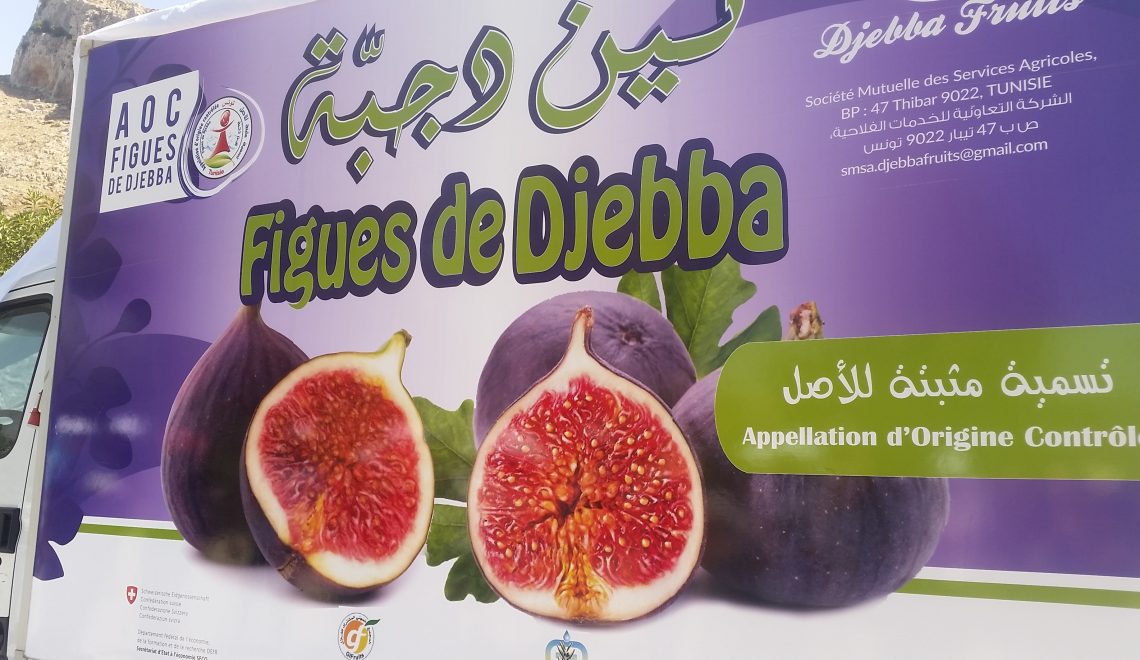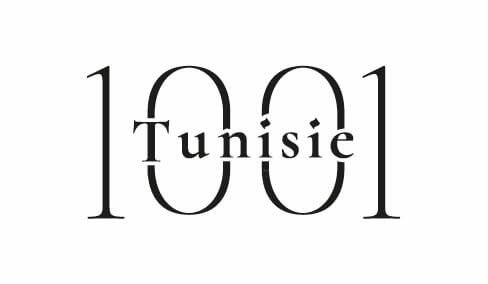
Thanks to a day of discovery of the fig of Djebba, a pastry contest valorising this product was organized in August 2017, during the harvest period which extends until the end of the month of September. More than a dozen women participated and a jury of Chefs, representatives of donors and journalists were able to discover no less than thirty recipes. By Amel DJAIT

Fig tree on rock
Before the contest, transformation and pleasure of the senses, we must go to the source, the fruit. The fig is the emblematic product of Djebba. It is the heart of its economy, art of living, identity …

The Montazah of Djebba
Djebba is a small village of 6000 inhabitants set on a side of mountain to some 700 m. Here everything revolves around agriculture and figs. In Tunisia, the only fruit that to date enjoys an Appellation d’Origine Contrôlée (AOC) is the “Bouholli”, the rolls royce of figs. The variety grows only in this locality and its name refers to the “Houli”, traditional clothing of rural women of the same color.

The Bouholli is an AOC which has been granted by decree of the Tunisian Ministry of Agriculture. It certifies that the “product whose stages of manufacture (production and processing) are carried out in the same geographical area and according to recognized know-how. It is the combination of a physical and biological environment with a traditional human community that underpins the specificity of an AOC product. Designations of origin are neither trademarks nor registered designs, but official certifications of provenance and know-how issued by a body under the control of a ministry and sanctioned by a law enforcement agency.The objective of these signs of quality is to make them easily recognizable “.
Today the farmers of Djebba have created a (SMSA) Mutual Society of Agricultural Services “Djebba Fruits”. 67 farmers sell their products 80% more expensive than standard figs. Thanks to their recent grouping (2014), they benefit from the AOC and support of international cooperation, program (PAMPAT), including assistance with the creation of a packaging unit, a refrigerated truck ….
Although the Bouholli is the undisputed star of the Tunisian fig, there are at least more than 27 recognized varieties including “Zidi”, “Goutti”, “Garai”, “Boukhboza” , “Soltani Ahmer”, “Zergui”, “Soltani Abiadh”, “Fawari”, the “Zergui” …


The dynamism created around the fig is also at the source of an annual contest involving women farmers in the village. Valuing the fig of Djebba pushes the amateurs thus to convert traditional recipes to the fig. Thus they rework the “samasa” or “makroudh”, better known for dried fruit for the first and dates for the second, dried fig, more commonly called “chriha”. These two first recipes won the first two prizes. The rest of the proposals tried to combine figs with creams, pancakes, drinks, cakes, sweets, pastry, tarts ….

Fresh, dried, powdered or chipped, the fruit meets the needs of an inventive cuisine that is beneficial to health, given the virtues of the fig: antioxidant power, low sugar content, rich in vitamins and fiber, and taste delicately sweet. On the spot, the women pass on ancestral recipes and produce a jam but also dried figs, chocolates with figs ….
The products are marketed by the SMSA “Djebba fruits” and by the Agricultural Development Group “Kounouz Djebba”. The potential of the product is enormous esteemed by the chef Riadh who wants to make his students work at the Ecole hôtelière de Kerkouane on the product.

The contestants

Contest entries creations
Jam “Kounouz Djebba”
That said, women have even more ambitions. They want to make their village an ecotourism center and structure themselves to receive visitors for a day: Wassila Djebbi is enthusiastic despite monstrous difficulties to sell their jams: “Our region is very beautiful, we like to receive and we let’s have a culinary know-how that is worth the detour. Here, each house can be a guest table! “The Djebba region is already known as one of the most unmissable hikes in Tunisia.
Moreover, it is also and above all that the motivation of several travel agencies invited to discover the region. Rachida Ben Kilani is a consultant at Wided Travel. It organizes trips for loyal customers and is enthusiastic about an excursion to Djebba: “The area is beautiful, a little walk, a good lunch and a musical entertainment in the Montazah of Djebba will do the trick. Tunisians are good customers. They want to discover their country and have fun. We filled two vehicles with 66 people for one day in Haouria. Our Tabaraka program was complete too. Our prices are reasonable and our customers in demand. I am in Djebba to finalize my program and the region is already in the pipe »

Meals on the plateau of the Montazah of Djebba
In Tunisia, local tourism is being structured and is increasingly becoming an essential and structuring component of the activity. Local products and quality labels are also on the way. In November 2017, the first national competition for local products will be organized. The Bouhoulli fig of Djebba and the jams will certainly be part of the game.
The competition is organized under the leadership of APIA in collaboration with the Ministry of Agriculture and Water Resources and Fisheries, the Ministry of Industry and Commerce and the City of Science. The whole project evolves within the framework of the Market Access Project for Agri-Food and Agricultural Products (PAMPAT), supported by the State Secretariat for the Swiss Economy (SECO) and the United Nations Development Organization Industrial (UNIDO)


 َAbonnez-vous
َAbonnez-vous

